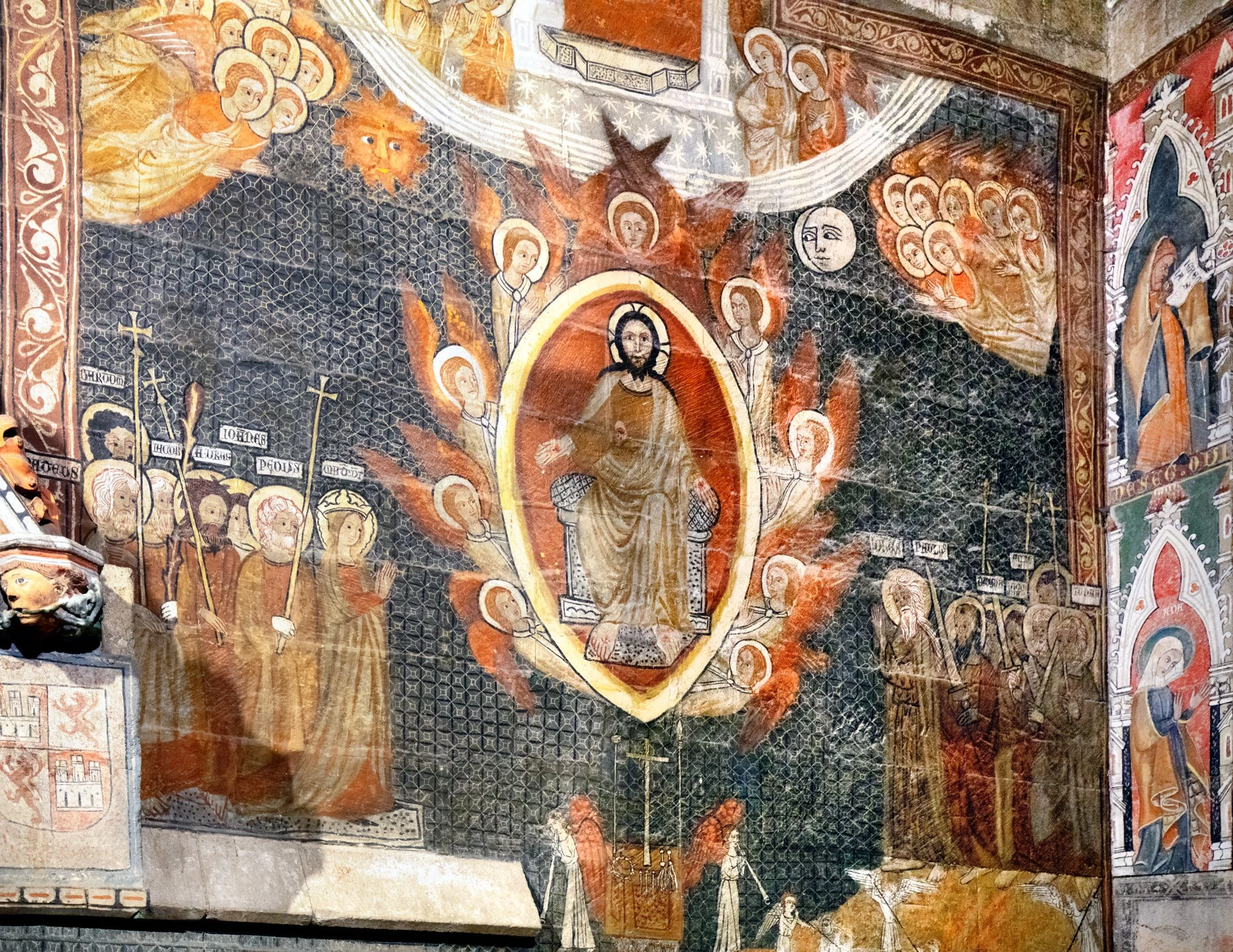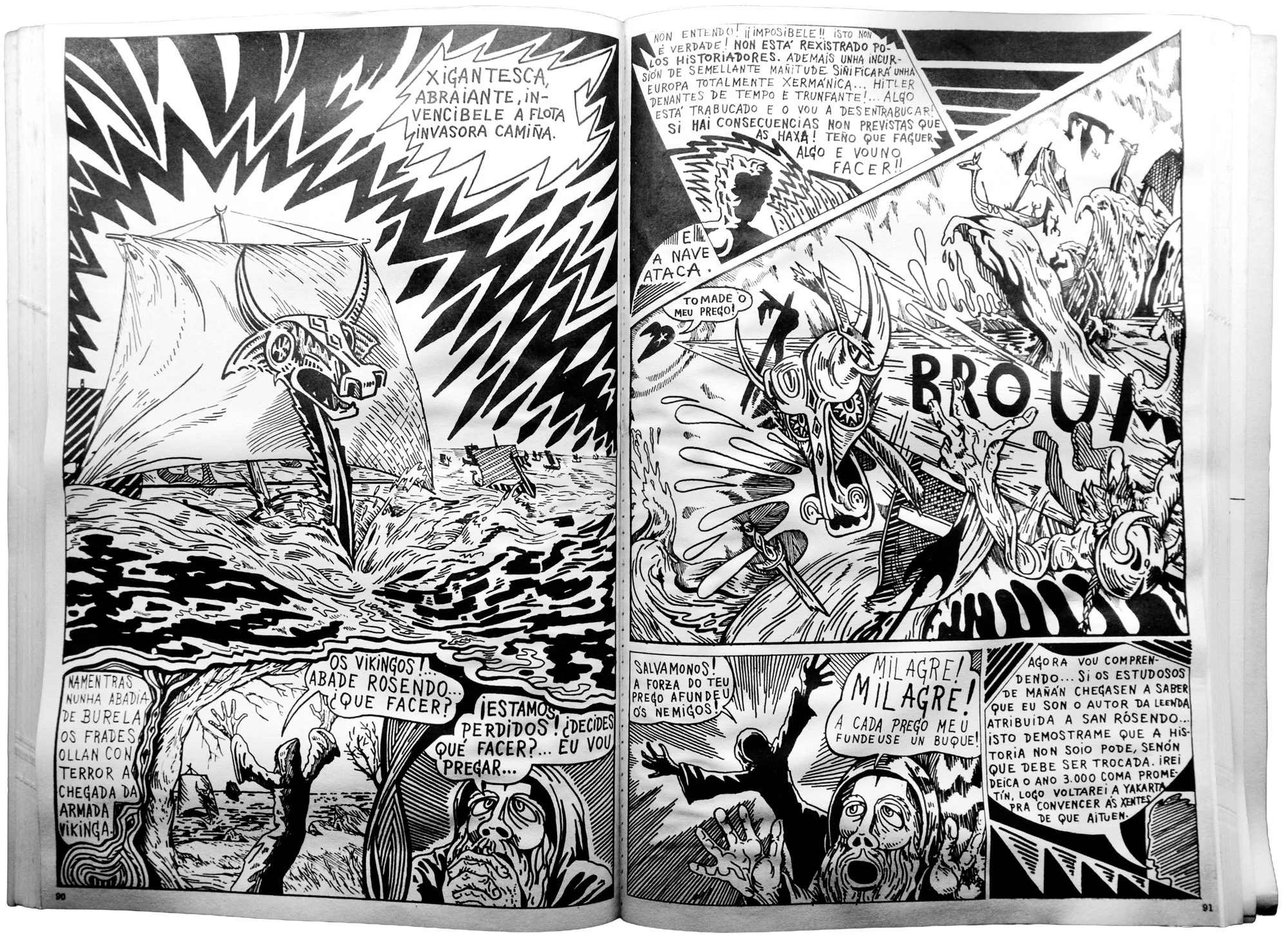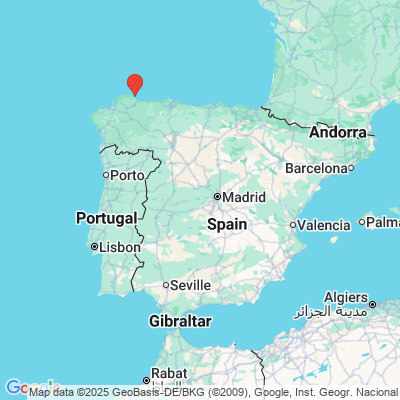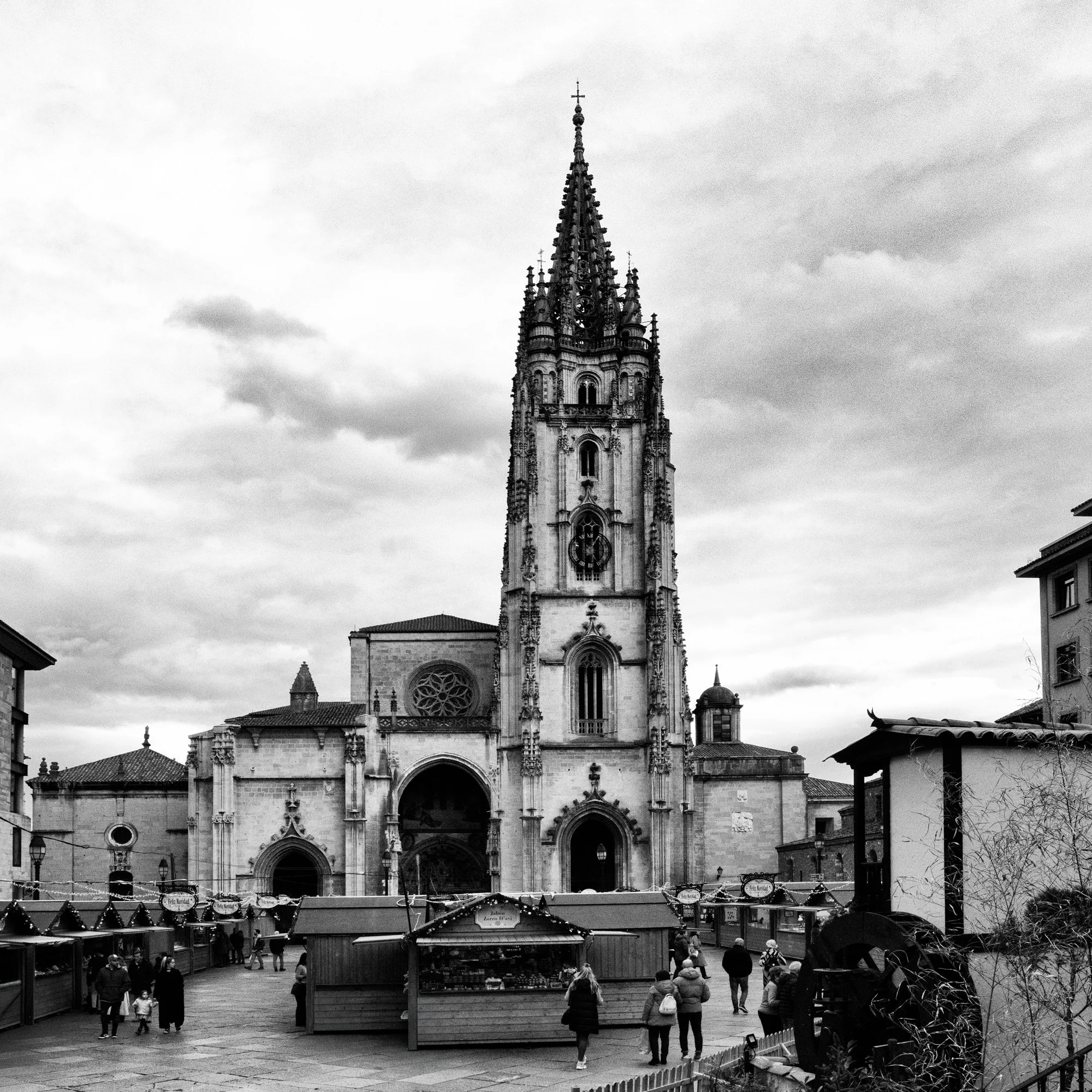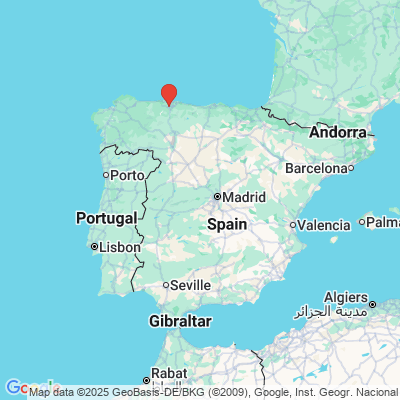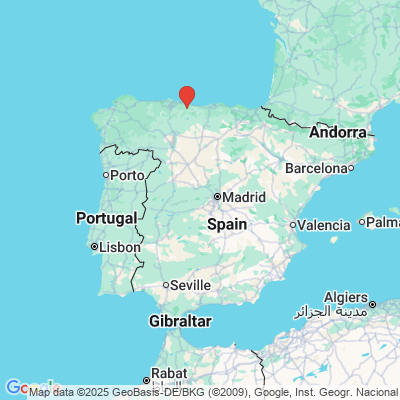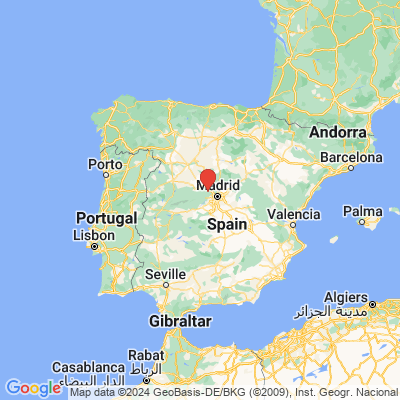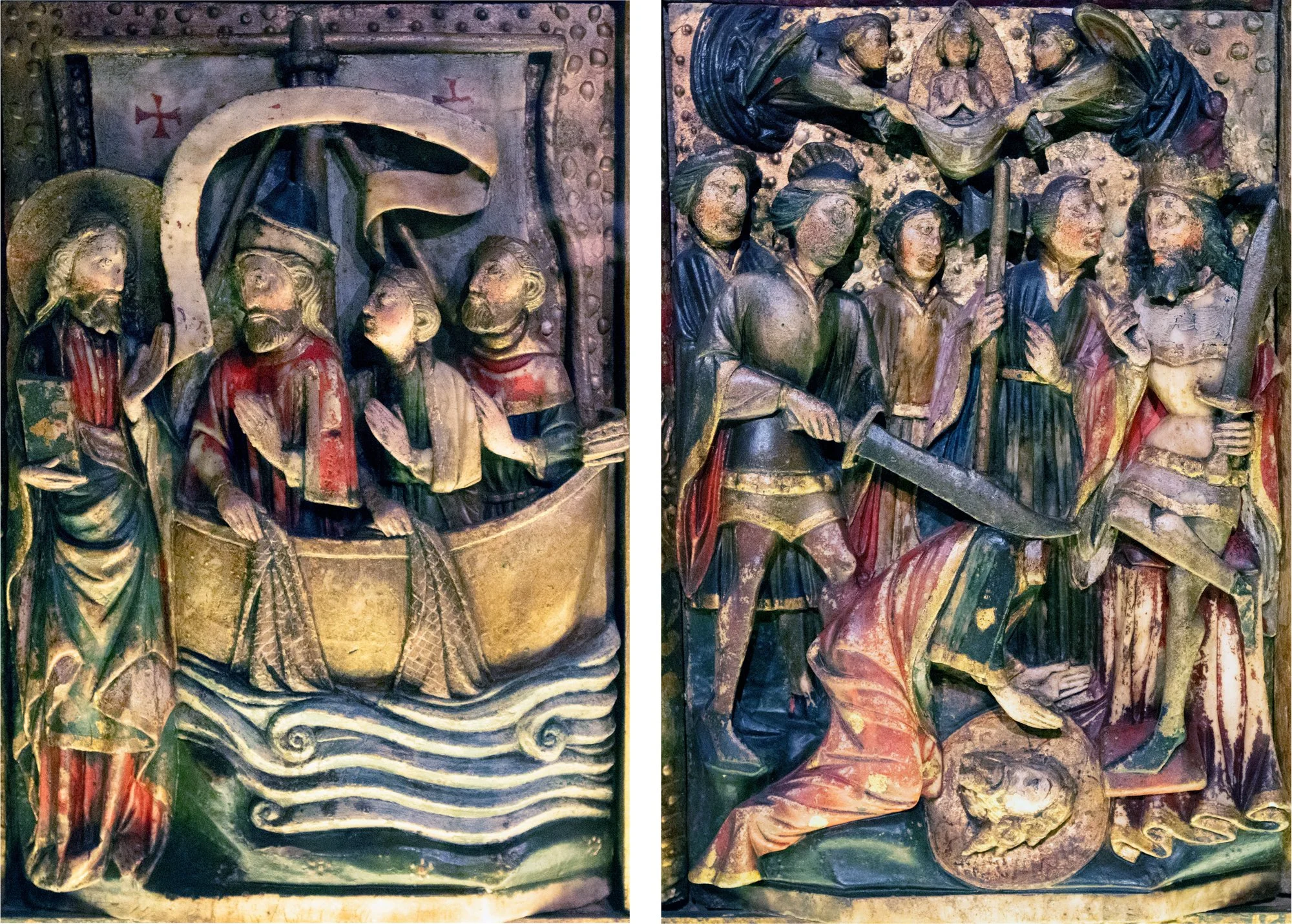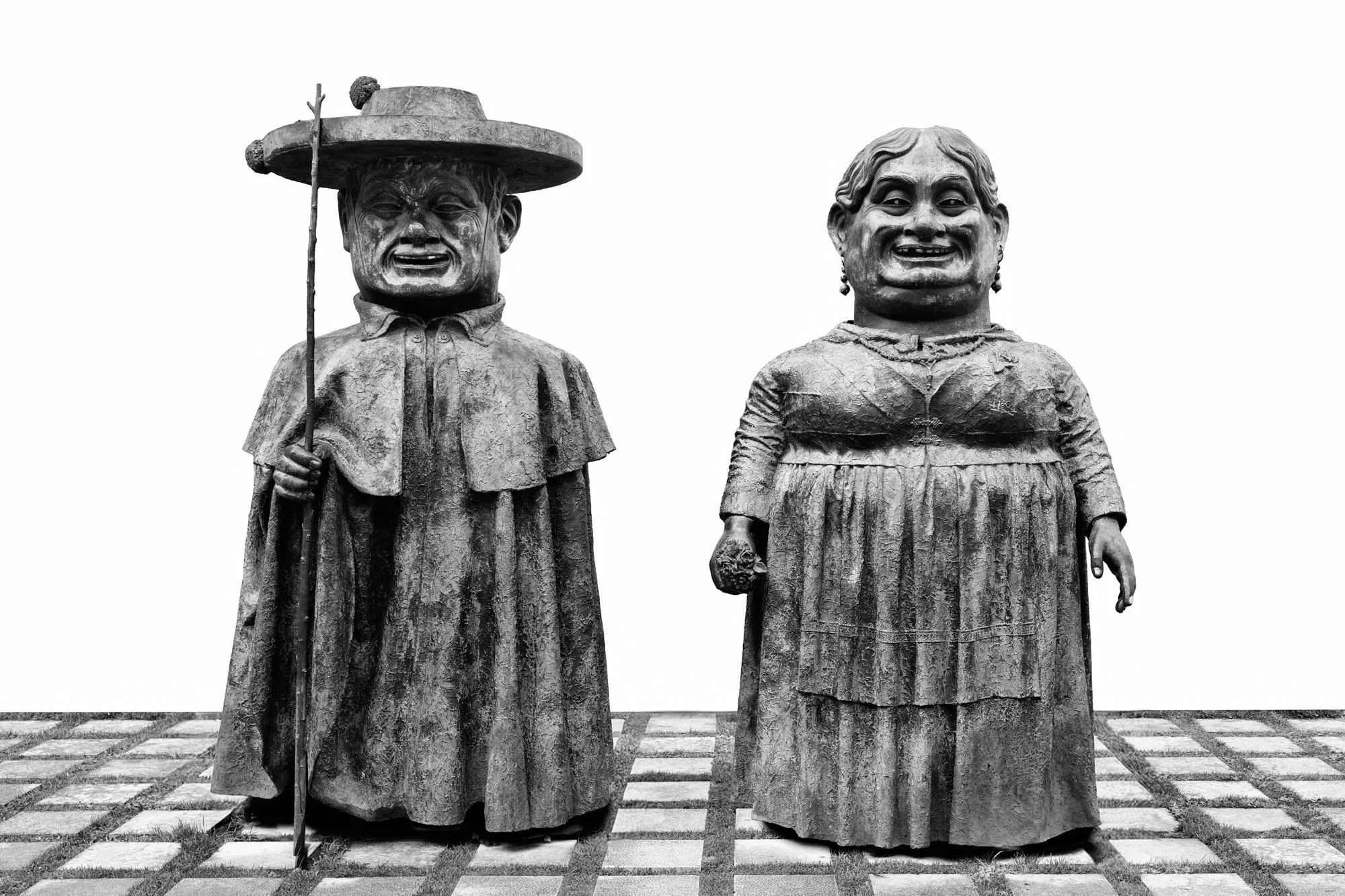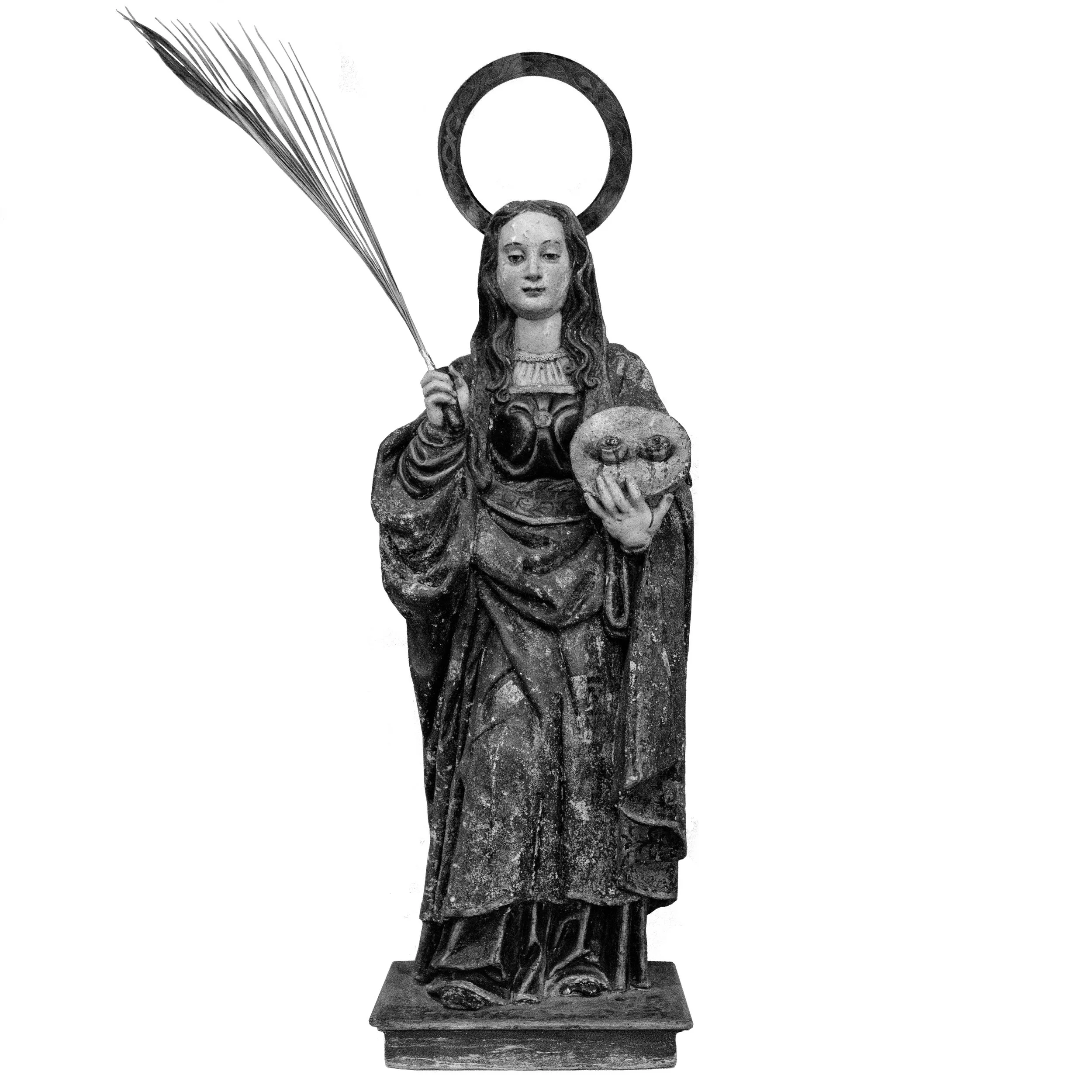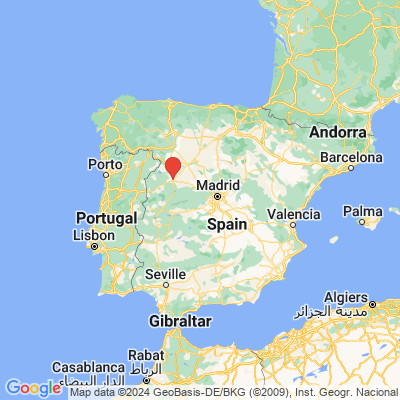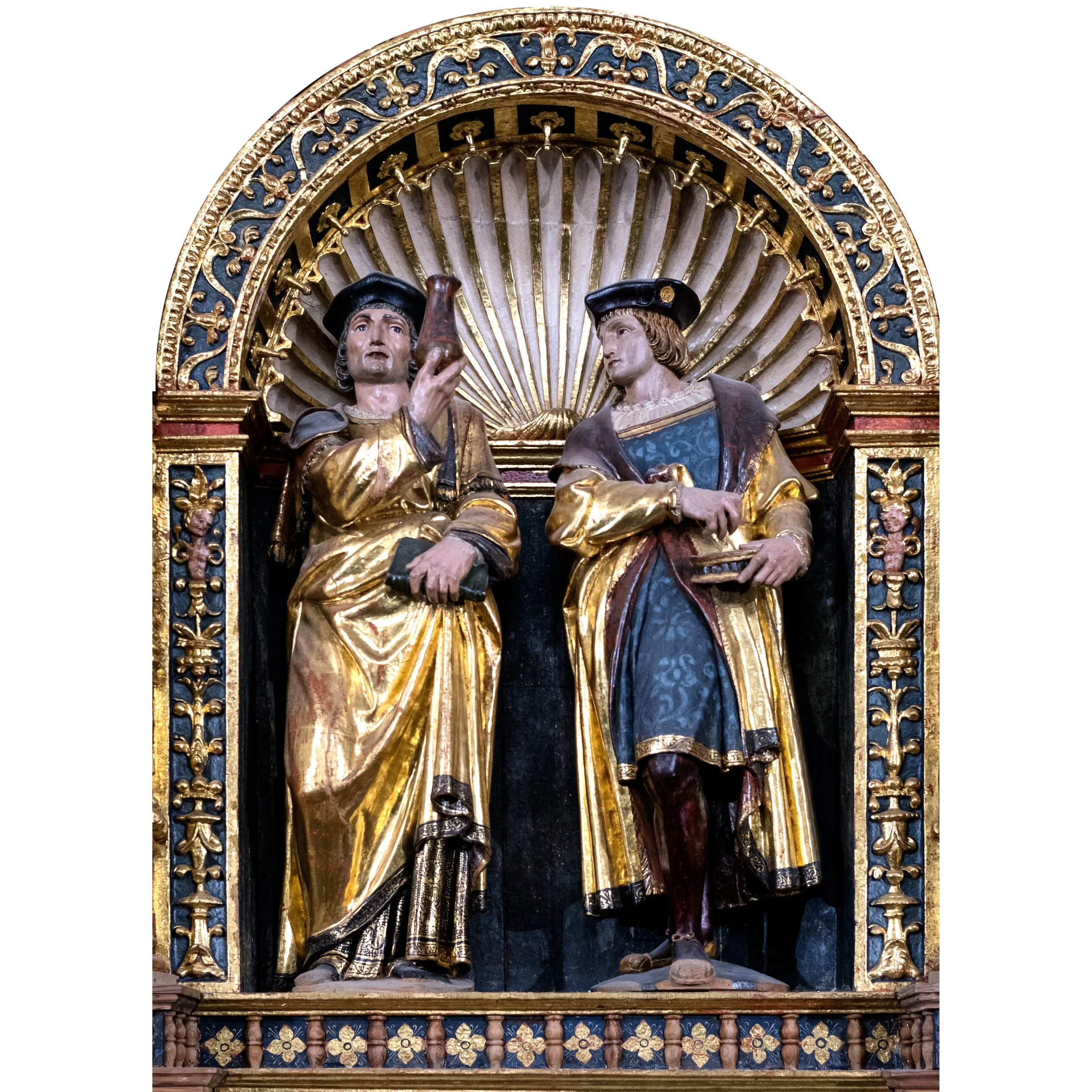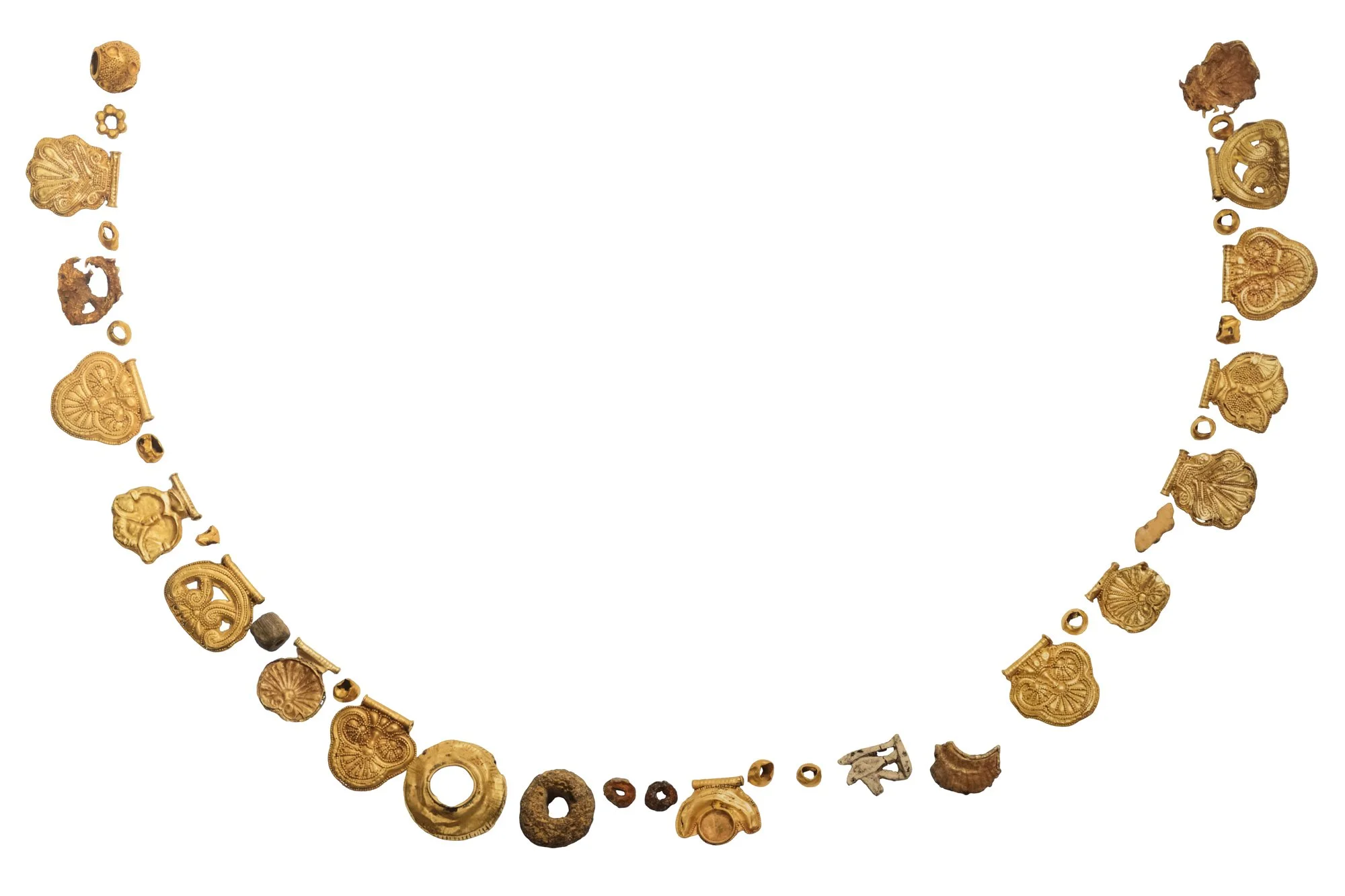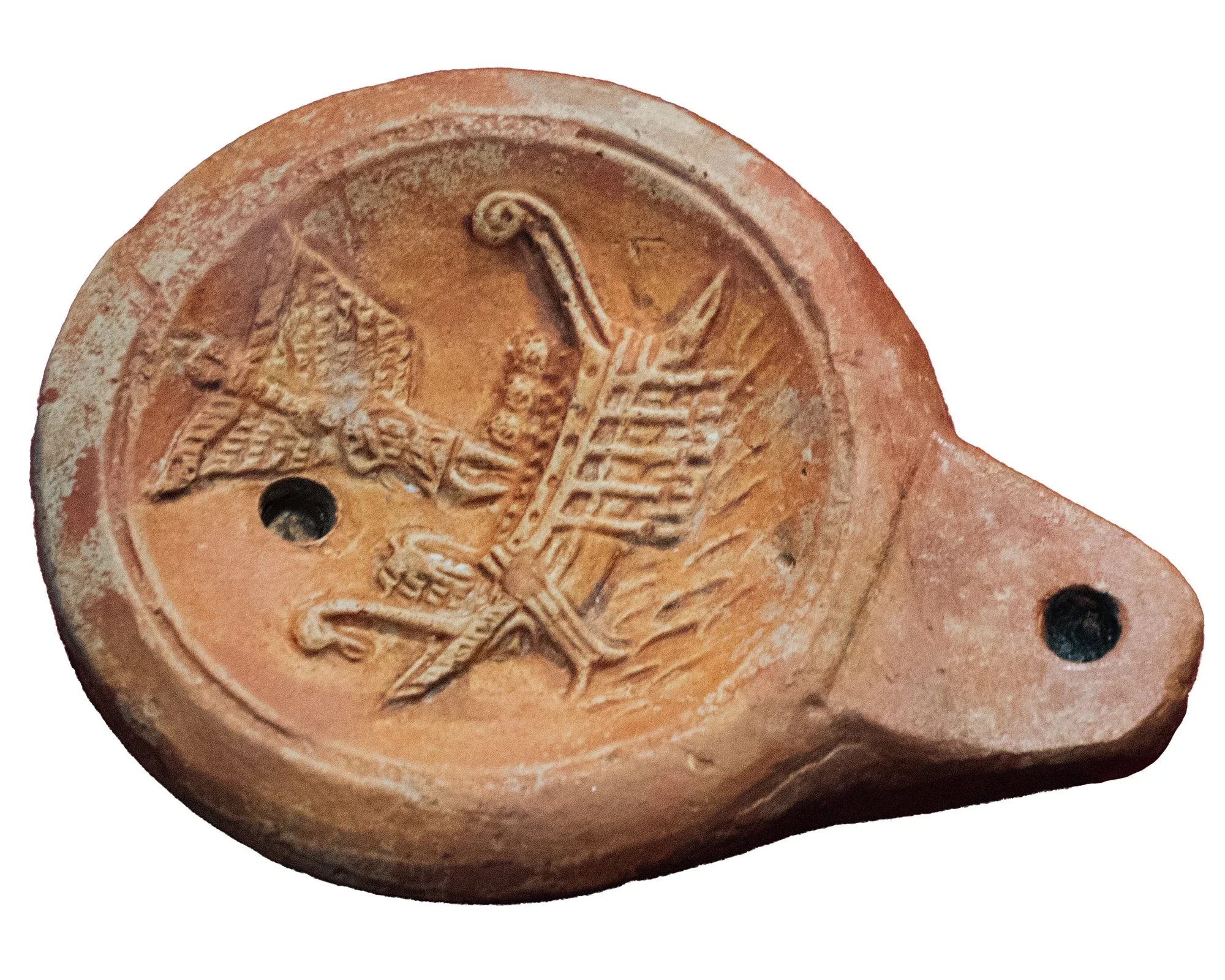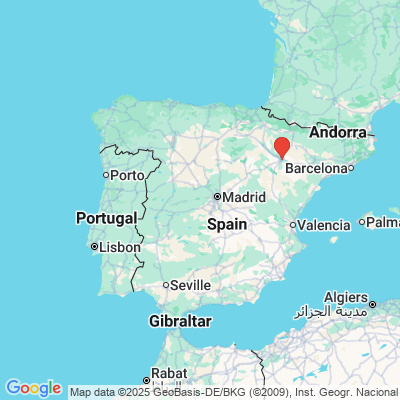Christ in Majesty surrounded by angels and saints, with the sun and moon as witnesses. Fresco from the Chapel of St. Martin, Old Cathedral of Salamanca (c. 1300), painted by Antón Sánchez de Segovia.
Step into the Chapel of St. Martin in Salamanca’s Old Cathedral and you are immediately surrounded by one of the most breathtaking fresco cycles in medieval Spain. Painted around the year 1300, these walls are alive with fiery color, gold halos, and a vision of eternity that once spoke directly to the faithful of the city.
At the center of the great composition is Christ in Majesty, seated within a glowing mandorla — the almond-shaped frame of divine light. His hand is raised in blessing, his other resting on the Book of Life. Around him swirl ranks of angels, their faces turned toward the Judge of all creation. Even the cosmos bears witness: the sun and the moon appear with human faces, as if stunned by the unfolding vision.
On either side, processions of saints advance toward the throne, holding crosses and palm branches, their names once carefully inscribed above them. They are not remote figures but companions, examples of courage and faith who join the celestial chorus. Above, more angels surge like flames in worship, a reminder that the entire heavenly court is gathered here.
This fresco is more than decoration; it is theology in color. In an age when few could read, images like this made the mysteries of salvation visible. Standing before it, a medieval worshipper would feel both awe and urgency — the promise of paradise and the warning of judgment. Even today, its intensity is impossible to ignore.
The Chapel of St. Martin, built as the burial place of Bishop Martín Alfonso, became a stage for this dazzling vision. The painter Antón Sánchez de Segovia, working at the transition between Romanesque solemnity and Gothic elegance, gave Salamanca one of its most enduring treasures. The figures remain stylized yet animated, the flames vibrate with energy, and Christ radiates a serene authority that bridges heaven and earth.
To gaze at this fresco is to stand where countless believers once stood, confronted with the ultimate questions of time and eternity. It is art not just to be admired, but to be experienced.
Further Reading
Peter Klein, Romanesque and Gothic Wall Paintings in Spain
Gerhard Schmidt, The Last Judgment in Medieval Art

